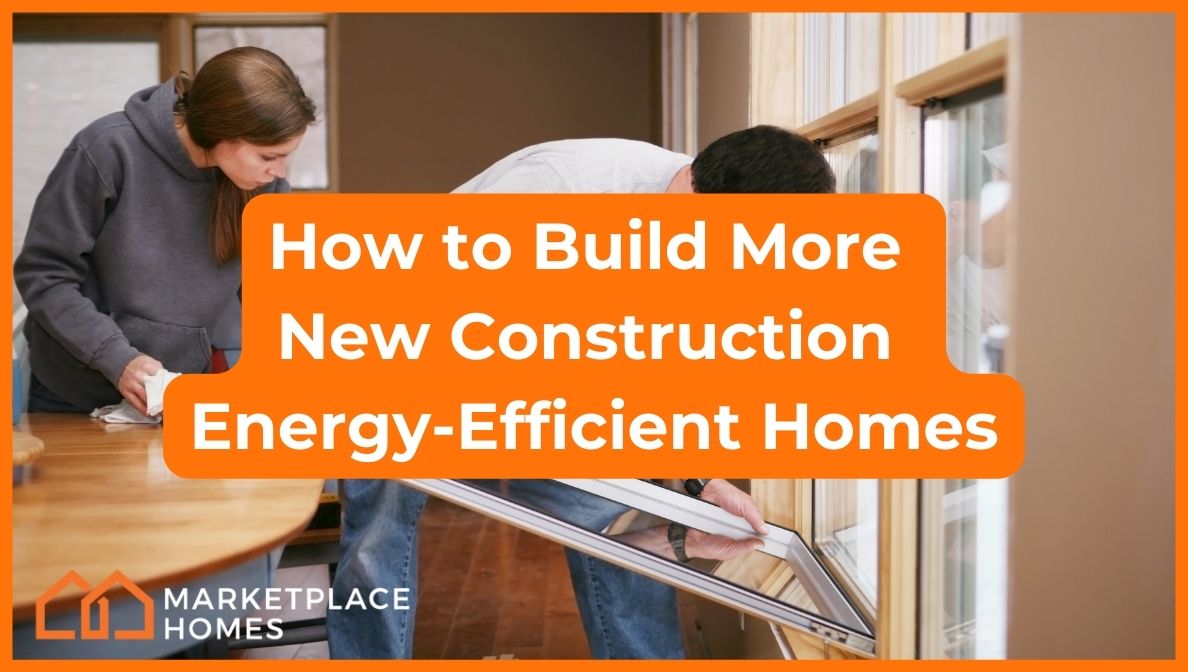How to Build More New Construction Energy-Efficient Homes
Builders around the country are supplying new construction homes in a market that desperately needs more housing inventory. At the same time, home buyers are more aware than ever of energy savings.
In fact, the National Association of Realtors found that over 79% of buyers want to reduce energy use with features like all energy-star appliances, triple pane windows, and other energy-saving components in their homes.
By supplying the real estate market with more energy-efficient houses, builders can soften the housing shortage and offer homes with modern upgrades and a smaller carbon footprint. How can home builders ensure new construction dwellings use less energy to supply what the market requires?
How to Build More New Construction Energy-Efficient Homes
To create more energy-efficient homes, builders can use eco-friendly building materials and methods during the building process. What other things can builders do to make homeowners confident that their new construction home promises the lowest energy bills possible? Here are some examples:
Install Features that Prevent Cooling and Heat Loss
A new home is better at reducing energy use because it is made according to the most recent building codes. Here are some examples:
-
Excellent insulation for exterior walls along with modern insulated siding.
-
Cool roofs (with an efficient ventilation system) to reflect the sun’s heat.
-
Air-sealing windows, doors, vents, and ductwork. By preventing as much air leakage as possible, homes will waste less energy.
-
Prevent heat transfer through UV rays by installing low-E windows with solid weatherstripping, which block most heat from the sun.
-
Install insulation with high R-value in attics, foundations, and crawl spaces.
Use the Latest HVAC System
A new heating and air conditioner system up to today’s energy saving standards can decrease home energy use. For example, an energy-efficient heat pump that is at least 14 SEER with a programmable thermostat can reduce the energy costs of the heating and cooling system.
HVACs are one of the primary sources of energy usage in a residential property, so having efficient energy systems in place will ensure you spend less on home heating and cooling compared to using an older, less-efficient unit.
-
Hot Tip: Through the Energy Efficient Home Improvement Credit, installing a qualifying HVAC enables you to claim tax credits that reduce what you owe in taxes! This credit also applies to other improvements like new doors and windows!
Install Efficient Plumbing
-
Install energy-saving water heating systems like a tankless water heater to save on the cost of heating water quickly.
-
Reduce water usage with high-efficiency toilets and low-flow faucets. These use less water than the traditional 1.6-gallon toilet or higher-flow faucets. These countermeasures can reduce water consumption by half when used in an entire house.
Use Energy Star Appliances
Using refrigerators, dishwashers, clothing dryers and washers, and other appliances that are rated “Energy Star” by the Department of Energy can make a home more energy-efficient. Energy efficient appliances are also modern in design and features, making life more convenient for the homeowner.
-
Hot tip: Appliances that respond to smart home automation can make life a breeze for your future homebuyers. Being able to turn off ovens or start a laundry cycle remotely is useful in a lot of situations.
Mind the Smaller Details Too
On top of installing significant energy savers like choosing superior HVAC systems, you can also do small things to make a more energy-efficient building. Choosing energy-efficient lighting fixtures and using natural light to reduce the need for interior lighting during the day can be additional ways to thrill your future homebuyer.
Build More Energy-Efficient New Construction Homes
Buying a new construction home comes with a lot of consideration. Making the most cost-effective choices without skimping on quality is key for both you and prospective buyers. These best practices are just a few examples of what builders can do to make their next project the most energy-efficient home design in their listings to date.

